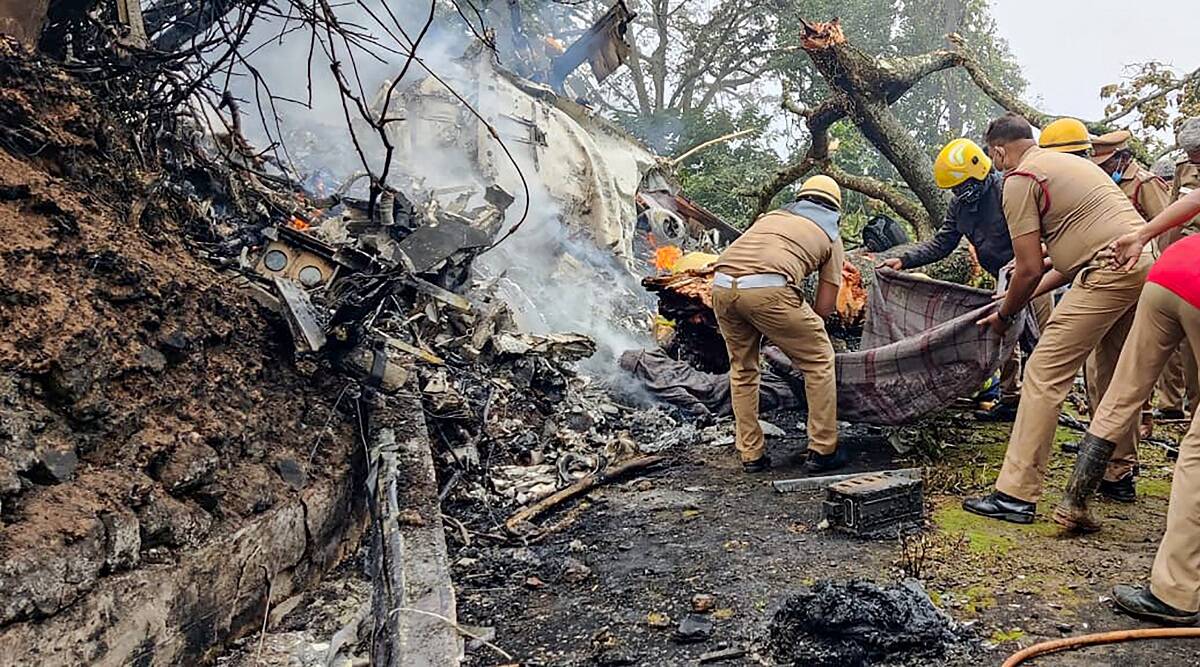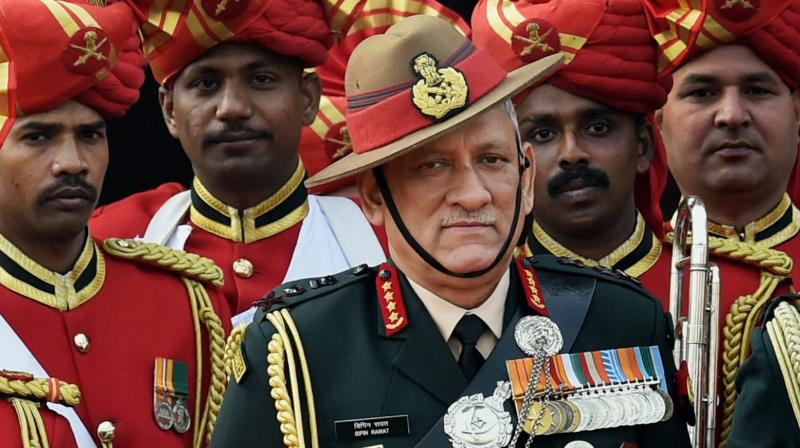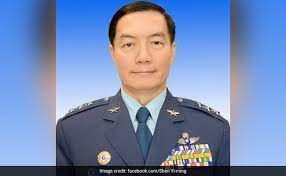
“The nation has lost one of its bravest sons. His four decades of selfless service to the motherland were marked by exceptional gallantry and heroism. My condolences to his family,” grieved the President of India on the tragic death of India’s 1st Chief of the Defence Staff, General Bipin Rawat and his wife Madhulika Rawat in a chopper crash at Coonoor in Tamilnadu on December 8, 2021.
General Rawat, a visionary commander, who meant business and who understood that the Indian defence structure needed to come out of the stereotype knew that his path was strewn with thorns.
But the chopper crash raises several questions. Choppers are a very complicated machine. We have seen several choppers crash in the past in our country in which we have suffered great loss of senior as well as other VIP personnel. At least 17 chopper crashes have been recorded between November 1963 and the one under discussion on December 8, 2021. Have we learnt anything from those crashes like the least use of this deadly machine particularly for the VVIPs? Have we any mandatory guidelines on who, when and where not to travel by helicopters? Is our secrecy of the movement of VVIPs foolproof and is there any checking system etc?

An inquiry has been ordered by the IAF into the crash. Reasons like machine failure, climatic conditions, competence and dependability of the pilot, and things like that are talked about loudly. But no voice has so far been heard about the whispers of sabotage. Why we should not rule out the sabotage is what we are going to elaborate on here.
It was an MI-17 V-5 chopper. Made by Kazan Helicopters, a subsidiary of Russian Helicopters, they count among the most advanced transport helicopters in the world. Normally used to carry personnel, cargo and equipment they can also be used for destroying ground targets. Its 580 km standard flying range can be extended to 1,065 km with two auxiliary fuel tanks. It has a maximum speed of 250km and 13,000 kg maximum takeoff weight and 6,000 metre max flying altitude. Among other numerous features, it has onboard weather radar and a modern autopilot that enable all-weather day-night operations over any terrain.
These features must dispel the assumptions like (a) the chopper developed any snag during the flight when it was just 7 minutes away from the landing site. (b) that some navigation error happened (c) owing to fog vision was not clear (d) fuel shortage etc.
The chopper description repudiates all these assumptions. It had a weather radar and day and night operation system. A chopper in which a VVIP of the rank of CDS travels is always and invariably checked and rechecked for technical fitness. Therefore, the above-stated assumptions are irrelevant. There was no visible attack from a palpable body nor was there any attack from the ground by any airborne missile.
An important aspect of Gen Rawat’s position as CDS was his acute sense of reacting to threat postures of our two adversaries China and Pakistan. About nineteen months ago Chinese PLA made an unpredicted move in Eastern Ladakh and PLA troops entered Galwan Valley as part of China’s expansionist policy. Gen Rawat took command of Indian forces resisting the Chinese aggression. The hand-to-hand fight in Galwan left about 20 Indian soldiers dead as against more than 40 dead of the Chinese PLA.
The strength and determination with which Gen Rawat confronted the Chinese in Ladakh was a shock to the Chinese authorities and the entire free world appreciated how India was protecting her political sovereignty and national integrity. On November 16, The Hindu wrote: “China’s military said on Thursday it had lodged “solemn representations” with India and expressed its “firm opposition” to Chief of Defence Staff General Bipin Rawat’s comments earlier this month on China being the biggest security threat to India and mutual suspicion rising between the two sides.”
Only a couple of days back Gen Rawat had flown to Ladakh to watch the landing of troops by helicopters behind the enemy’s operation line in snow-clad Ladakh at a height of nine thousand feet above the sea. It was Gen Rawat’s strategy to deploy tanks and heavy artillery in Ladakh to resist the encroachment of PLA.
Thus we find that Gen Rawat had given offence to the Chinese aggressors and spoke of retaliating befittingly wherever China tried to walk into our territory.
At the same time, Gen Rawat had been unsparing to the terrorists in Kashmir and their handlers across the LoC. Operation All Out was his brainchild which routed the entrenched terrorists in the valley, stifled their hawala resources, dealt a blow to the overground outfits and streamlined encounters so that there is least collateral damage. He appealed to the Kashmiri mothers not to be unkind to their boys by allowing them to join militancy.
In yet another bold adventure, Gen Rawat planned the Balakot Surgical Operation which sent a signal to Pakistan that India could retaliate effectively and devastatingly if and when she chooses to do so in case Pakistan did not stop interfering in Kashmir.
And lastly, Gen Rawat issued warnings to Pakistan from time to time to dismantle terrorist camps and stop sending terrorists of various Pakistani Theo-fascist organizations to Kashmir. Pakistan was intermittently reacting angrily to the warnings of the Indian CDS, particularly when it recalled the developments immediately following the shooting down of the Indian jet and capture of Wing Commander Abhinandan.
China and Pakistan both are capable of hatching conspiracies. They are in tango in which China is trying to keep company with Pakistan in damaging India’s interests. Liquidating potential enemies is a game in which both China and Pakistan are adept. Remember in January 2020 Taiwan’s Chief of General Staff, Gen Shen Yi-Ming was killed in an air crash near Taipei. Like Gen Rawat, he, too, was a vocal critic of China. Neither his death in an air crash nor that of Gen Rawat is that simple or non-schematic.

The entire nation and its top leadership are shocked and stunned by the tragic news of the Nilgiri air crash in which eleven defence personnel besides the Rawat couple lost their lives. Among other casualties is Brig. L S Liddar (CDS’ Defence Advisor), Lt. Col Harjinder Singh, Wing Commander PS Chauhan and Squadron Leader Kuldeep Singh. The Vice President, Prime Minister, Home Minister, Defence Minister and the opposition leaders all have condoled the death of the first soldier of India.
The US Ambassador and the British High Commissioner in India and many world leaders have expressed their deep regret over the loss of CDS General Rawat. China and Pakistan have also expressed condolence. France, the UK, Israel, Vietnam and many other countries expressed condolences too.
Leaders succinctly spoke of General Rawat’s remarkable contribution towards the modernization of the Indian defence structure. “He was known for his remarkable leadership and strategic vision and added strength to the defence capabilities and made a stellar contribution to strengthening the national security,” said Vice President Naidu. PM Modi said: “He greatly contributed to modernizing our armed forces and security apparatus. His insights and perspectives on strategic matters were exceptional. His passing away has saddened me deeply.”
General Rawat was appointed the country’s first Chief of Defence Staff (CDS) in December 2019 after three years as the army chief. On assuming duties as CDS, Gen. Rawat had himself made it clear that in his capacity as the CDS “his mandate was to push ‘jointlessness and integration’ among the Army, Navy and IAF despite stiff resistance, while also weaning the forces off their overwhelming dependence on expensive foreign weapon systems.”
The ToI of December 9 wrote:
“He publicly junked the Navy’s long-standing case for a third aircraft carrier and rejected the IAF’s concerns over integrated theatre commands. During a seminar, he went so far as to dub the IAF ‘a supporting arm’ in war-fighting akin to artillery or engineers in the Army.”
“Several proposals mooted during Gen Rawat’s tenure ranging from measures to slash non-operational military flab and the pension bill to “monetization” of defence land and restrictions on CSD purchases, sent shockwaves down the ranks.
“Gen Rawat may have sometimes behaved like a bull in a china shop but it was urgently needed in the backdrop of the three services continuing to indulge in petty turf wars. Yes, theatre commands will have some adverse impact on the individual services but it is mandatory for the overall good’, said a military officer.”
A total go-getter, Gen Rawat did not believe in being a status-quoist. In meetings, he was blunt and never minced words. Yet he would listen to anybody with rapt attention if he found there was substance in what the speaker said. When he was appointed the first CDS, some sections of media did note that his appointment did ruffle many feathers among both serving officers as well as the vocal community.
